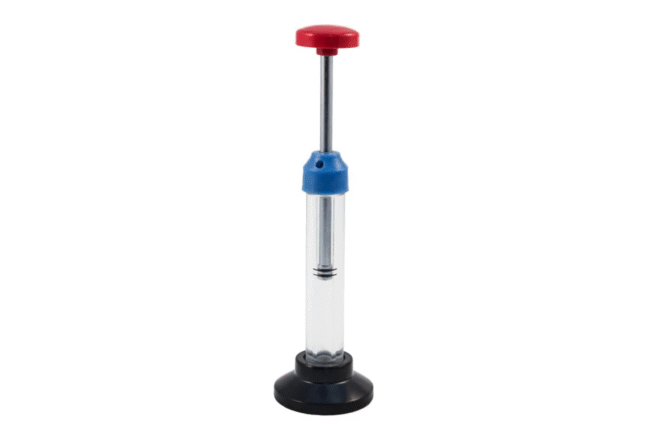
Why Hands-On Experiments Make Science Memorable
Science lessons often feel abstract when they’re only about theory, but demonstrations create a bridge between concepts and reality. Students who watch and engage in experiments develop stronger curiosity and a deeper grasp of the material. Demonstrations, such as energy and pressure experiments, allow students to see how invisible forces behave, giving context to lessons on physics and chemistry.
When educators use tools like a fire syringe, they help students witness how rapid compression can ignite a small piece of material, transforming an ordinary science class into a moment of awe. These moments often stick with learners for years, making lessons more engaging and easier to recall during exams or in future studies.
Connecting Demonstrations to Everyday Life
Relating experiments to things students encounter daily is a powerful teaching strategy. When students see how the same principles of pressure, combustion, or energy transfer appear in activities like cooking, car engines, or weather phenomena, the lesson feels far more relevant. It shifts science from something confined to a classroom into a practical, living concept.
Encouraging Inquiry and Critical Thinking
Demonstrations are not just about the “wow factor.” They should lead students to ask questions: Why did that happen? What variables affect the result? Could we change the outcome by adjusting one element? Encouraging students to form hypotheses and test their own ideas deepens comprehension and builds analytical skills.
Building Student Engagement Through Interactive Learning
Keeping students engaged requires a mix of visual, auditory, and kinesthetic teaching methods. Interactive learning strategies like live demonstrations, peer discussions, and quick challenges keep attention high and make lessons more dynamic.
Using Demonstrations to Break Up Lectures
Even the most attentive class can drift when faced with long stretches of theory. Incorporating short, impactful demonstrations creates natural breaks and draws focus back to the topic. A simple energy transfer experiment or a device like the fire syringe can reset the classroom atmosphere and provide a hands-on anchor for abstract lessons.
Peer Learning and Small Group Discussions
After a demonstration, letting students work in groups to discuss what they observed can lead to deeper understanding. Each group can identify variables, explain the science behind the demonstration, and even brainstorm additional experiments. This collaborative approach allows students to articulate their understanding and learn from each other.
Gamifying the Learning Experience
Adding competitive or challenge-based elements, like “predict the outcome” games, helps students remain attentive. Educators can reward correct predictions or encourage students to design their own quick experiments, turning the lesson into an interactive event.
Essential Classroom Experiments to Inspire Students
Memorable lessons often involve experiments that are simple to set up yet visually striking. These activities help students grasp core scientific principles while making the class feel exciting.
Classic Demonstrations That Always Impress
Some experiments stand out because of their visual appeal and clear connection to scientific concepts. They don’t just demonstrate a principle—they leave students fascinated:
- Rapid bottle-crushing demonstrations to show pressure differences.
- Balloon-powered cars illustrating Newton’s Third Law.
- The classic “egg in a bottle” experiment to demonstrate air pressure.
Everyday Materials for Science Lessons
Teachers don’t always need expensive lab tools to spark interest. Simple materials like baking soda, vinegar, balloons, or straws can become part of engaging lessons. These basic items help schools on tight budgets make science fun and interactive without major investments.
Developing Custom Experiments
Some schools encourage educators to develop their own experiments tailored to the curriculum. Teachers can use common scientific tools, along with custom-built apparatus, to create unique learning experiences that match their students’ interests and regional context.
Bringing Science to Life Beyond the Classroom
The impact of science education grows when students can connect lessons to their surroundings. Encouraging real-world applications helps them see science as a skillset rather than just a subject.
Field Trips and Outdoor Applications
Organizing trips to local science museums, observatories, or nature reserves gives students an opportunity to observe science beyond textbooks. Whether studying ecosystems, energy production, or astronomy, these trips make learning multi-dimensional.
Encouraging At-Home Experiments
Simple at-home projects can help students explore scientific concepts on their own. Teachers can provide lists of easy experiments that don’t require specialized equipment but reinforce key principles.
Example list of safe, at-home science activities:
- Growing crystals using household salts.
- Creating a homemade weather station to track temperature and humidity.
- Building small solar ovens to demonstrate energy conversion.
Inspiring Future Careers in STEM
Engaging demonstrations and interactive lessons often plant the seeds for future career paths. Many students who pursue engineering, chemistry, or environmental science credit a single captivating classroom moment—like a fire syringe experiment or a field trip—for sparking their interest. Showing students the variety of careers in science can make the subject more appealing.
Tips for Educators to Maximize Demonstrations
To make the most of live experiments and demonstrations, teachers should approach them strategically. These tips help ensure that the lessons are both exciting and educational:
- Always connect the demonstration back to core curriculum objectives.
- Encourage students to document observations and write reflections.
- Use follow-up questions to deepen understanding and spark curiosity.
- Balance visual excitement with scientific rigor to avoid distractions.
By creating an environment where science feels hands-on, relevant, and exciting, educators can inspire students to not only understand but also appreciate the subject. With tools like engaging classroom experiments and occasional dramatic demonstrations, science becomes a story students want to keep exploring.
